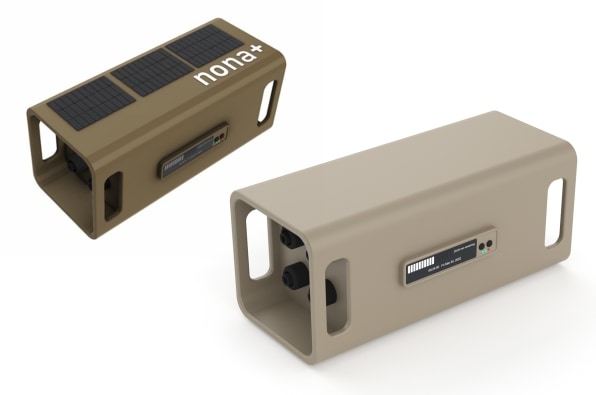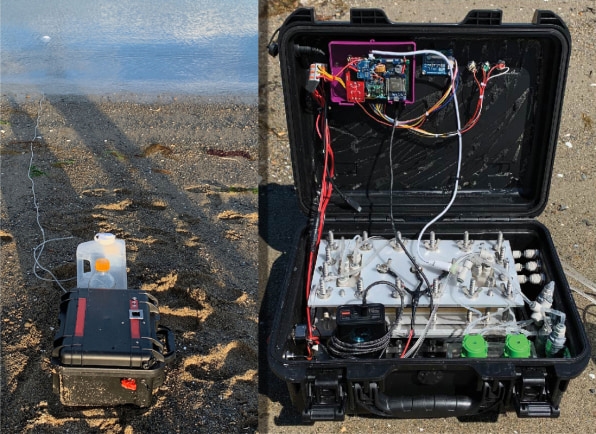This portable device can turn saltwater into drinking water at the touch of a button
Here’s a mind-boggling stat: There are more than 326 million trillion gallons of water on Earth. But less than 3% of that water is fresh water. And more than two-thirds of that water is locked up in glaciers, polar ice caps, far beneath the Earth’s surface, or otherwise unavailable. In short? Only 0.5% of Earth’s water is actually available for us to drink.
This may be about to change, however, as MIT researchers have developed a portable, user-friendly device that can turn saltwater into drinking water at the touch of a button. Their research was recently published in the scientific journal Environmental Science and Technology. For now, the prototype fits into a regular-size suitcase and can process 1 liter per hour; but when the product is fully developed, it will be able to filter 10 times that amount— making it a vital tool for remote island communities, seafaring cargo ships, and even refugee camps located near water.

[Images: courtesy Kevin Tang]
The desalination unit isn’t the first device that can filter saltwater, but existing devices are costly and require a lot of power to operate. They also rely on filters, which can be expensive and need to be changed regularly.
By comparison, this unit needs less power to operate than a cell phone charger and can be powered by a small solar panel attached to its exterior. It also works without ever needing to replace a filter because there simply isn’t one. Instead, the device uses two kinds of electric fields to remove particles like salt molecules, as well as bacteria and viruses.

[Photo: courtesy Junghyo Yoon]
Its real innovation is that it was designed to be used by regular people. A tube feeds the saltwater into the machine; the water is filtered inside the device, then another tube extracts the clean water into a separate vessel. On the outside, the device has only three visible buttons—the first one powers it, the second starts the process, the third one stops it. A screen notifies the user when the water is drinkable.
All of this means that the device could be used in areas with limited resources—provided the team can lower its cost. For now, that’s around $4,000 to $6,000, which is similar to other units out there. But Junghyo Yoon, a scientist at MIT’s Research Laboratory of Electronics who developed the device and coauthored the study, projects that they can bring it down to around $1,500, which would make it more accessible for NGOs.
Much of this will come down to the final design and fabrication of the device. Yoon says the current prototype sits inside a regular suitcase he bought online, but he’s hoping for a $1 million investment that can help him take the product out of the lab and into a factory where he can experiment with different fabrication processes like injection molding.
A final prototype could be ready by the end of next year—and bring us one drop closer to unlocking those 326 million trillion gallons of water.
(46)


